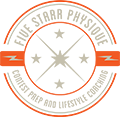
One of the most often overlooked components when executing (or hell…writing!) a training program is tempo. It’s easy to say “4 sets of 10, go!” and just bang those suckers out rapid fire. Or maybe you’ve got a little more experience and you understand the value in slowing things down and keeping things at a steady, methodical tempo.
BUT – how much have you really experimented with varied tempos through all phases of a given exercise? This is a key component to much of my programming. Not all exercises have tempos specified, but when they are noted it’s important to follow them precisely and hold yourself to it as written. Key to that is understanding: wait, what the hell do these numbers mean, exactly?
So let’s break it down. In a workout plan I write, you might see something like this:
This is how I present things, and with all workouts there are also video playlists that demonstrate everything contained in a workout where I also narrate the key points I want you focusing on during the move. This exercise is an Iso-lateral leg extension (performed one leg at a time), 3 sets of 8 reps per leg, medium rest (~0:45 between sets), and a tempo that looks like a middle school locker combination. 1/3/1/0 – uh, what?
Spoon feed it to me please
Most important to understand is that all exercises have 4 phases.
- Concentric: this is the push or pull, the exertion. In a pulldown, this is the phase where you’re pulling down. In a bench press, this is the phase where you’re pressing.
- Squeeze: this happens after the concentric in all cases. In a squat, you perform the concentric (the squat) and then have an opportunity to squeeze the glutes/quads/hamstrings between reps as the joints are all extended. In a bicep curl, after the concentric (the curl), you can squeeze the flexed bicep at the top of the rep for added emphasis.
- Negative: this is the opposite of the concentric, also called the eccentric. In a squat, this is the descent. In a pull-up, it’s when you lower yourself to prepare for the next rep.
- Pause: this is literally just the pause between reps (in a curl, leg extension or curl, pulldown, etc) or mid-rep (in a squat, at the very bottom, for example). It always follows the negative.
As you can see, the phases always happen in this order, but not all exercises start with the concentric. Most exercises do – but exceptions include:
- Any squat
- Any press (bench, shoulder, leg, etc)
- Romanian/stiff-leg deadlift
- Dips
These exercises all start with the negative.
How can I remember this?
The tempos presented are expressed as seconds in each phase, and are always show in the order listed above. Concentric, Squeeze, Negative, Pause. You can use what every mnemonic device helps you to remember those – I use the very creepy Cats Spay and Neuter People. No one ever accused me of not being twisted!
So for most exercises – including that leg extension in the example – you start with the first number and read them in order. A 1 second lift, a 3 second squeeze (ouch – hold it there!), a 1 second negative and NO pause (or release of tension) between reps. So yes, every rep takes 5 full seconds. When you see a big number in that 2nd or 3rd slot (slow negatives are also painful), you know you’re in for a treat.
For the exception exercises listed above, you’ll start with the 3rd number and read them in order starting there. So a squat listed with a 1/2/1/0 tempo indicates a 1 second negative (3rd number), no pause at the bottom, a 1 second concentric/push, and a 2 second squeeze of everything between reps.
You might see bodyweight dips with a 1/2/3/0 tempo: 3 second negative, no pause, 1 second push, 2 second squeeze (that hurts just reading, I’ll be honest).
It’s ok to be confused – at first!
Tempos are really weird and foreign to most people at first. They are the source of MANY questions, but also a lot of feedback along the lines of “I’ve never been this sore in my life“, and “I thought I was going hard but clearly I had no clue” – so if you’re following one of my plans, now you’re really prepared to tackle it to the max. And if you’re training on your own, experiment with some tempos and hold yourself to them! You might be surprised at how things feel.

